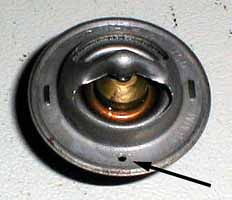
Some examples:
Get a lighter battery (10 lbs), light weight seats (40-90 lbs), lightweight wheels; empty your trunk- you would be suprised how much weight is lurking in there; holesaw the bumpers behind the covers where it can't be seen; pitch the a/c compressor. Hell, if you're desperate scrape the undercoating off the car.
Now, if you managed to pull 200 lbs from your car you just gained 20hp.
Simple isn't it? Here is a more graphic example; I gutted just the interior from my turbo-intercooled k-car for a 230 pounds savings. The cars prior best was 12.37 at 108 mph, after the weight reduction it went 11.9 at 112 with no other changes!!
Front
(87 Daytona bucket) seats ...................................................................................
76 lbs
Rear
seat .................................................................................................................................
26 lbs
Carpet
.......................................................................................................................................
30 lbs
Back
panels .............................................................................................................................
10 lbs
Heater
core ............................................................................................................................
19 lbs
2 boxes
of odds and ends (seat belts, trim, etc.) ...................................................
35 lbs
Center
console .......................................................................................................................
10 lbs
Pass
side door "lightened" ...............................................................................................
32 lbs
Tilt
steering column swapped out for non-tilt unit .................................................
07 lbs
2) Installing a modified 180 degree thermostat will make you power AND promote longer headgasket life!

The 180F thermostat alone is good for 1-2 tenths in the quarter mile but
the real trick is a 1/16 hole drilled in the top of the thermostat.
It prevents or lessens the "thermal shock" the engine sees when the thermostat
opens for the first time and "shocks" the head and block with ice cold
coolant from the radiator. 1/16 is about the perfect size, 1/8 is
to large and causes the engine to run cooler then 180 degrees believe it
or not. Now some of you may think that "Wow 180 is good 160 MUST
be better!", this isn't so- as a matter of fact rings like to be HOT and
cylinder heads like to be COOL. The best temps for rings is 180F+
with temperatures below that radically increasing ring wear. All the newest
engines use reverse flow cooling where the head/s are cooled first and
then the coolant runs down the bores, exactly opposite of what happens
to our 2.2 engines. All the newest engines also come with 2 stage thermostats
to lessen thermal shock and the imports have been using "jiggle pin" thermostats
for years which pretty much does the same thing as our modified unit above
does...
4) Go to the track and play with your timing (buy or borrow a good advance timing light) Try advancing/retarding the timing in 2 degree increments till you mph is at its highest (do 2 passes after each change to be sure its consistent). In the Daytona I picked up 1.5 mph by bumping the base timing from the stock setting of 12 degrees to 14. At 16 degrees it didn't go any faster so for safety its left at 14.
5) K&N air cleaners should be mandatory equipment. They are cheap and good for a 1-2% horsepower increases plus you may never need to change an air filter again. I haven't noticed any gains using the cone style filters over the factory replacement ones so don't feel bad if that's what your using. Its a nice improvement over the "factory" paper filters.
6) Another good choice would be a nitrous oxide kit, 50-100 hp at the touch of a button. Only problem is when the bottle runs out, but 50hp of juice lasts a long time. http://www.nosnitrous.com/
7) 2.5's and 2.2 16V's have balance shafts, 15 hp at 6000 rpm if you make them go away! FREE HORSEPOWER!
8) Getting a valve job? Have the machine shop backcut the valves! its good for a few more cfm of airflow..
9) Plan on going drag racing? Pump up the rear tires to 45-50 psi for less rolling resistance or better yet swap to skinny rear tires while racing...
10) Don't use TRW replacement u-joint for the transmission half shaft, they break. In 2 passes.
11) If your using a Talon BOV make sure you modify it so it doesn't leak at 20+ psi of boost. You will lose 3-4 mph if you don't and waste a few trips to the track till you figure it out and fix it! (yes I'll do a page showing how)
12) A bag of ice on the intake manifold between passes has been an effective trick of racers for years...
13) Slicks DO NOT break parts and they improve your ET tremendously. More transmissions have been broke by wheel hopping radial tired cars then slicks ever did...
14) Have a TI/TII Garrett? Get the 89 TII (2.5 inch) exhaust swingvalve housing, good for 5 hp on a stock motor and quite a bit more on a modified one...
15) Gus Mahon has a whole page of tricks for you to check out right over HERE.
16)
Something not mentioned on most websites- After hammering on your car LET
IT IDLE FOR A FEW MINUTES! This lets the turbo cool off and prevents
"coking" of the turbochargers shaft bearings. They even make timers that
do this for you so you can get out of the car and walk away with the key
in your hand while the car continues to run a preset amount of time before
shutting down.
17)
Don't install a fuel pressure gauge directly on the fuel rail.
They
tend to vibrate and break the rail causing a massive fuel leak!!!
(assuming you have a Turbo II engine to start with)
1)
2.5 or 3 inch mandrel bent exhaust
2)
Ported exhaust manifold
3)
BOOST (defeat map sensor, manual boost control & extra fuel of course)
4)
Large intercooler if running over 20 psi of boost.
Combined
with the tricks above there is enough information here to build a easy
13 second car, if you have traction, 12's or even 11's are easily within
your grasp! Anything you wish to add to this list? EMAIL
ME!